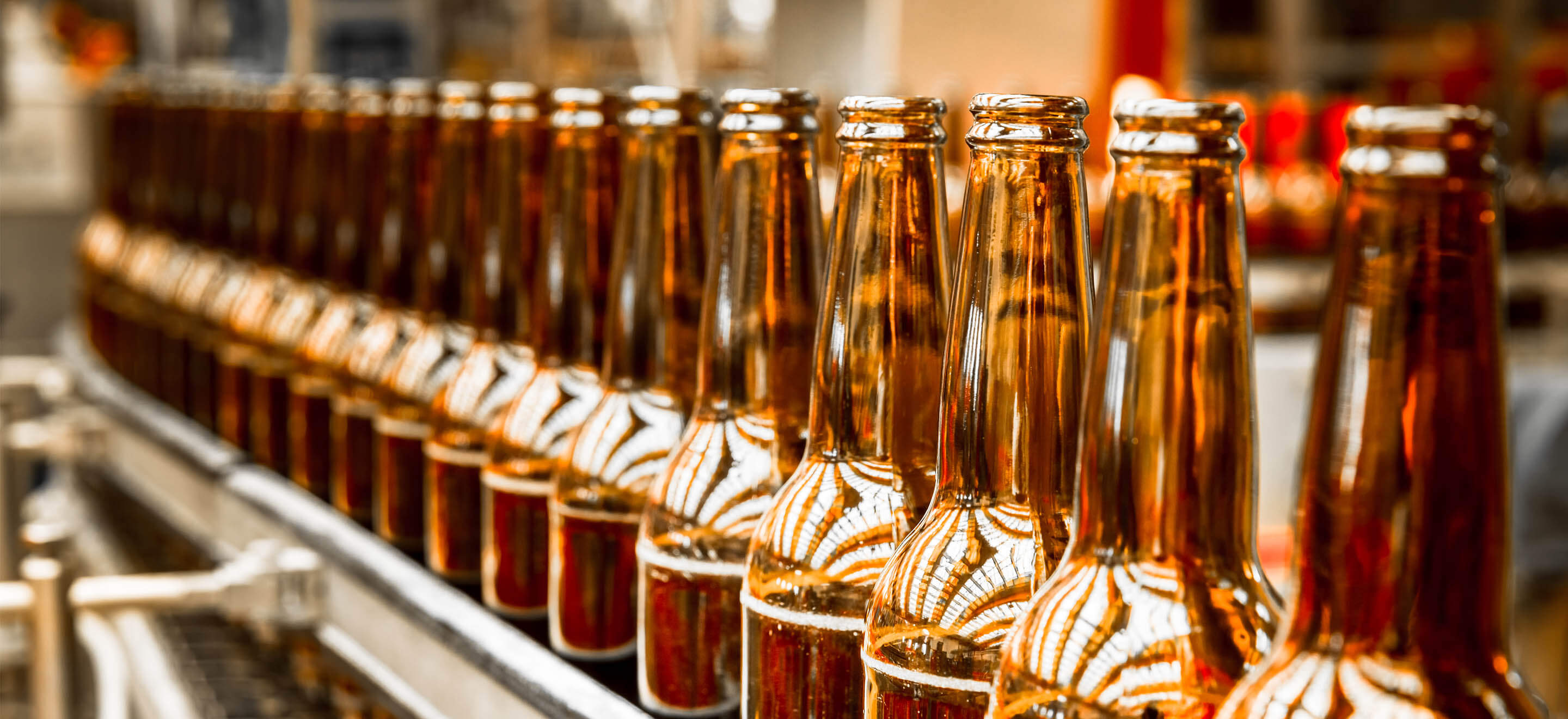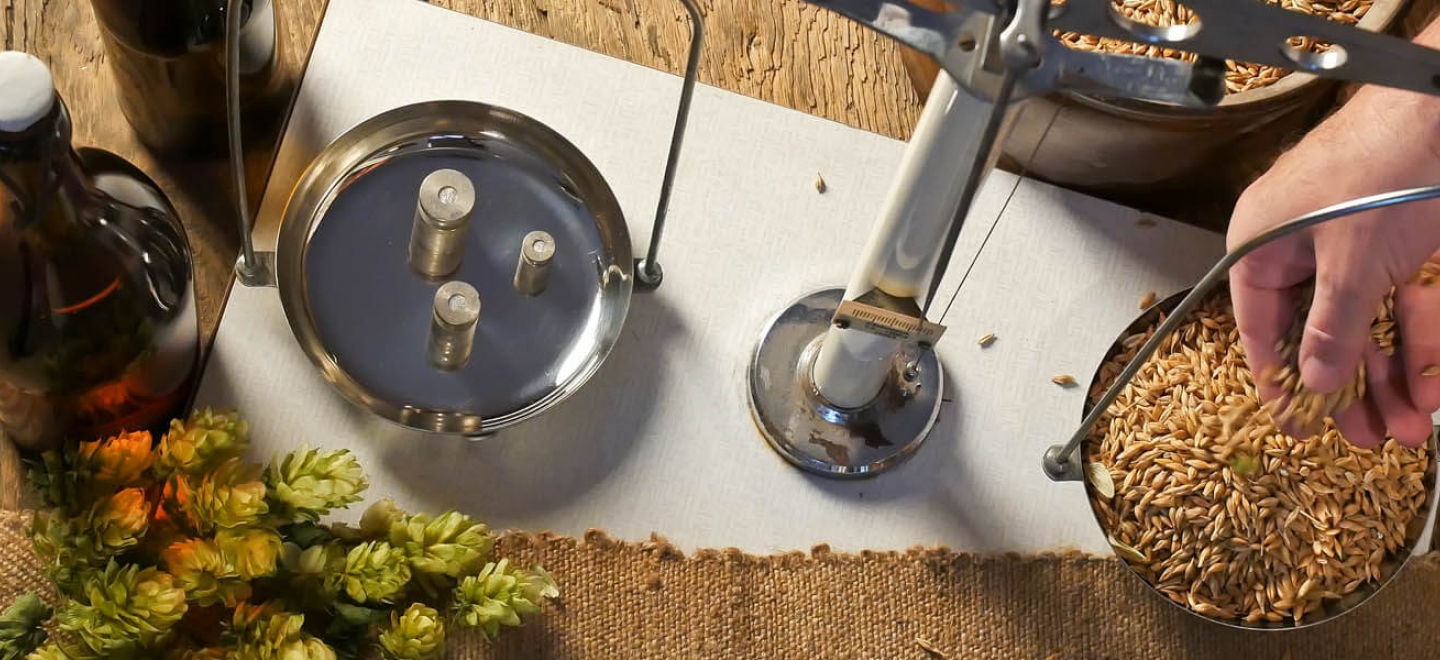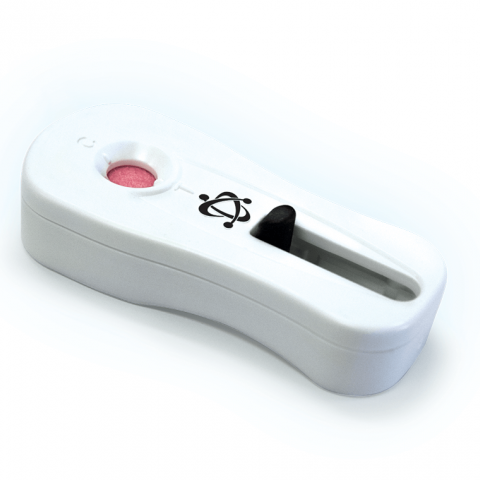Beer quality testing assay development and validation
Background
INVISIBLE SENTINEL was founded in 2006 with a goal of revolutionizing molecular diagnostics. Although many PCR-based testing tools were available, they were dated and had inherent issues. Existing rapid methods were both complex and expensive or had limitations with regards to sensitivity and accuracy. The mission of INVISIBLE SENTINEL was to radically improve on this, developing a new molecular technology known as VERIFLOW®.
VERIFLOW® was engineered to improve the user experience while dramatically reducing the capital and operational costs associated with existing PCR technologies. It was also designed with a comprehensive set of features to meet the diverse needs of end-users in a variety of industries. The technology was the culmination of many years of development and utilizes proven scientific principles for microbial detection combined with new proprietary scientific approaches to achieve optimal performance. The result is a technology platform featuring DNA Signature Capturing technology - a novel method for DNA amplification and identification coupled with a simple, unencumbered workflow from sample collection through data interpretation. VERIFLOW® has been applied across multiple industries including food safety and beverage quality, with a focus on the brewing industry. Since launching BREWPAL® in April 2015, INVISIBLE SENTINEL has worked with industry-leading breweries around the world to address their microbial quality concerns. Hundreds of breweries, in more than 15 countries, are now using VERIFLOW® technology to protect their brands and ensure their beer meets the most stringent quality standards.
TECHNOLOGY OVERVIEW
Combining new scientific approaches, VERIFLOW® couples robust end-point PCR technology with vertical flow-based detection.
The process starts with target DNA amplification, an essential step underlying PCR-based molecular diagnostics. Amplification is the process of increasing the copy number of a specific DNA sequences (DNA signature) to detectable levels. There are a number of different amplification technologies, however VERIFLOW® uses a unique, proprietary approach. The proprietary enzymes used by VERIFLOW® during amplification are designed to be robust and resistant to inhibition. This allows the amplification process to occur without interference from inhibitors naturally present in a variety of samples. Traditional approaches require rigorous sample purification to remove inhibitors and ensure successful amplification. VERIFLOW’s proprietary enzymes and inhibitor sequestration technologies eliminate the need for sample purification or DNA extraction, thereby significantly reducing the complexity of the overall testing process. This improvement in workflow and robustness allows for a number of benefits to be discussed further in this manuscript.
The next step in the detection process is the streamlined detection of the amplified target DNA from the sample. Unlike traditional real-time (RT) PCR-based methodologies, VERIFLOW® does not use optical detection of amplified DNA. Optical detection has several drawbacks including the requirement to “clean up” samples to avoid interference with optical sensors. Instead, the use of a unique DNA signature detection system allows VERIFLOW® to capture amplified DNA on a handheld cassette. The target DNA binds to the test line on the cassette to allow for easy interpretation of the result.
The last critical advancement in the development of VERIFLOW was to solve for the ability for DNA to flow through a set of capillaries to achieve final detection and visualization of the results in a handheld cassette. VERIFLOW® developed a robust and viable vertical-flow approach. This approach, combined with modifications to both the physics and materials that mediate flow, enables the intact DNA to successfully reach the final test line. This feature of the vertical-flow technology enables instant results and significantly reduces backflow, two limitations associated with lateral flow technology, an alternate category of rapid diagnostic technologies. VERIFLOW® results are qualitative and quantitative using an Optical Reader that enables detection and enumeration for microbial risk assessment.
SCIENCE BEHIND THE TECHNOLOGY
DNA Extraction-free Methodology
Historically, molecular methods have greatly improved specificity and sensitivity but are expensive, cumbersome to perform, and require specialized equipment and highly trained personnel. Some of the contributing factors to the high cost are the need for elaborate sample preparation prior to PCR amplification, followed by optical detection of the products using expensive equipment. RT-PCR based methods require complex DNA extraction steps due to the presence of inhibitory agents in beer. PCR inhibition can be caused by inactivation of the enzyme and/or non-specific interactions of the primers and target DNA. In these methods, failure to use a highly purified DNA sample can increase the probability of false-positive and false-negative results. VERIFLOW® was engineered to overcome these challenges. The technology employs a DNA extraction-free methodology that significantly reduces sample transfer time from enrichment bag to PCR tube. Robust buffer technologies paired with inhibitor-resistant DNA polymerases not only provide outstanding stability and sensitivity, but also enable efficient amplification of DNA targets directly from crude food samples, thereby eliminating the need for DNA purification. The performance of these enzyme variants is further enhanced by using novel sample treatment strategies that simplify, expedite, and reduce the cost compared to complex PCR-based tests. The elimination of sample purification greatly reduces multiple sample manipulations, thus reducing the risk of user-error. VERIFLOW® PCR reactions are further safeguarded from potential carryover contamination by replacing dTTP (deoxythymidine triphosphate) with dUTP (deoxyuridine triphosphate) in the dNTP (deoxynucleotide) mix along with Uracil-DNA Glycosylase (UDG). Before PCR commencement, the UDG activation cleaves the uracil base in dUTP-containing DNA (amplicon) preventing reamplification of amplicon due to amplicon contamination.
DNA Amplification
PCR is an in vitro technique that enables multiplication of a specific DNA sequence in a sample. Because of its high sensitivity and specificity, PCR has become a popular technique in the biotech and diagnostic arena. The process uses complementary oligonucleotides (primers) to specifically recognize a unique genetic sequence in the target pathogen genome. This specific DNA fragment undergoes a cyclic three-step heating and cooling process, also known as thermal cycling, in a PCR reagent tube containing a mastermix of DNA polymerase, nucleotides, and primers. For the VERIFLOW® line of tests, this process is carried out in the VERIPRO® Thermocycler.
The three cycles of PCR:
- Denaturation: The double-stranded, target DNA is denatured at a high temperature into two separate single strands.
- Primer Annealing: The temperature is lowered to allow two pre-labeled synthetic oligonucleotides (or primers) to hybridize to the target DNA.
- Extension: The temperature is raised to enable a polymerization process, where a newly labeled double-stranded DNA molecule (amplicon) is generated by the extension of primers complementary to the single-stranded DNA template.
The three steps are repeated more than 30 times (depending on the target of interest), resulting in an exponential amplification of the target DNA.
Visualization of the Results
One of the most challenging elements of meeting the beer industry’s molecular testing needs is the process required to simplify data interpretation. The use of purely software-based data interpretation increases equipment cost and workflow complexity. Annual maintenance fees and service contracts also add to the already high cost of equipment.
VERIFLOW® is unique. The visualization of results in VERIFLOW® relies on a vertical-flow technology housed inside a handheld cassette. Upon sample application, the colloidal gold-protein conjugate is rehydrated and reacts with the labeled amplicon in the sample. This mixture flows vertically on to a nitrocellulose membrane immobilized with capture antibodies on the test line. The amplicon, sandwiched between the gold-protein conjugate and capture antibodies, aggregates on the test line to result in a visually detectable crimson line indicating the presence of contamination within just three minutes of sample application. The membrane also contains a control line, so that a single line indicates a negative result and two lines indicate a positive result.
To obtain quantitative results, test line intensity can be measured using the VERIFLOW® Reader. The cassette fits the holder of the reader to asess each cassette individually. The reader is programmed with a calibration curve that measures the ratio of the test line to the control line intensity and correlates that value with the calibration curve. Using this built-in algorithm, the reader displays quantitative results (cells/mL) from the test cassettes, generating a precise number associated with the test line intensity.
DEVELOPMENT AND VALIDATION OF THE BEER PORTFOLIO
Background on Beer Spoilage
Beer is a low pH (3.8 – 4.7), alcoholic (0.5 – 10% w/v) beverage recognized as a microbiologically stable product. The lack of nutrients and oxygen (< 0.1 ppm), along with high levels of carbon dioxide (0/5 w/w) and antimicrobial effects of hop bitter acids (17 – 55 ppm of iso-α-acids), create an unfavorable environment for spoilage microorganism survival and growth. Despite seemingly non-optimal conditions, beer spoilage microorganisms inadvertently gain entry into yeast slurries, fermentation tanks, bright tanks, and packaged product. The result is an increase in turbidity and unpleasant organoleptic changes in the beer. Despite aseptic packaging of canned and bottled beer, biological contamination can occur post-packaging due to ineffective pasteurization or filtration resulting in adverse effects on packaged product. Beer spoilage impacts product quality and can cause serious economic losses for a brewery.
Portfolio of Assays
INVISIBLE SENTINEL set out to develop a portfolio of products, powered by targeting the top 6 categories of beer spoilers (Table 1).
Each assay in the portfolio was purposefully developed and extensively validated to meet the highest standards for inclusivity, exclusivity and overall robustness. This paper will detail out the development and validation of the first and lead assay, BREWPAL®. All of the assays followed the same high-quality process for development and validation and are summarized below.
| PRODUCT | TARGET |
| BREWPAL® | Hop-resistant Pediococcus and Lactobacillus |
| BREWLAP® | Lactic Acid-producing bacteria |
| BREWDEK® | Brettanomyces / Dekkera species |
| BREWBRUX® | Brettanomyces bruxellensis |
| BREWMAP® | Megasphaera and Pectinatus |
| BREWSTAT® | Saccharomyces diastaticus |
Table 1: Beer product portfolio
Assay Development
Lactic Acid Bacteria (LAB) belonging to the Lactobacillus and Pediococcus genera cause approximately 60 – 70% of beer spoilage incidents. Two hop-resistant proteins known as horA and horC, have been identified as the spoilage compounds that cause haziness and ropiness, resulting in sourness and an unpleasant odor in beer.
The development process of the BREWPAL® assay system involved an extensive three-stage process: primer design, primer optimization, and PCR optimization.
The hop-resistant genes horA and horC were identified as the genetic markers that give Lactobacillus and Pediococcus spp. the capability to spoil beer. The gene product of horA confers hop resistance to LAB by functioning as an ATP-dependent, multi-drug transporter that removes hop bitter acids out of cells while horC encodes a proton-motive, force-dependent, multi-drug transporter. In a comprehensive study of over 50 organisms, it was shown that 94% of Lactobacillus and Pediococcus species tested had horA, while 96% had horC. BREWPAL® targets both Lactobacillus and Pediococcus-specific, hop-resistant genes—ensuring 100% of the species are detected and eliminating the probability of false-negative results.
A total of 42 prototype primers pairs (20 primer candidates targeting horA and 22 primer candidates targeting horC) were analyzed in a multiplex system to choose the leading primer candidate pairs where horA and horC targets were amplified simultaneously.
| PAL Strains tested | Matrices tested | LODs Performed | Cassettes Run |
| > 21 inclusivity | > 16 beer types | 67 comprehensive sensitivity panels |
> 650 in-house |
| 31 exclusivity | 4 fermentation samples | ~ 650 run by validation partners |
Table 2: Summary of internal BREWPAL® development
Inclusivity and exclusivity studies were conducted to optimize and validate assay sensitivity of the system. A total of 21 Lactobacillus and Pediococcus strains and 31 closely related microorganisms isolated from beer were used for inclusivity and exclusivity studies respectively. A comprehensive set of 67 sensitivity panels was performed to determine the limit of detection (LOD) of the assay. Diverse matrices were tested throughout the development process, including light and dark beers, specialty ales and flavored beers, high alcohol content and multiple fermentation beers, and samples obtained at various stages of the fermentation process. During development and internal/external validation, over 1300 BREWPAL® cassettes were run on various samples and matrices to ensure that performance criteria were met. In addition to the internal validation, the BREWPAL® system was subjected to external validation studies to examine sensitivity, specificity, and performance in real-world client samples. The data collected to date is detailed in the following sections.
BREWPAL® Performance Specifications
| Sensitivity (LOD) | 10 cells/mL |
| Time to Results | < 3 hours |
| Matrix Compatibility | Beer, yeast slurry, colony PCR, environmental |
| Assay Configuration | Qualitative and quantitative |
| Target Selection | Pediococcus and Lactobacillus-specific hop-resistant genes horA and horC |
| Specificity | Pediococcus species: P. damnosus, P. inopinatus, P. parvulus, P. pentosaceus, P. acidilactici, P. claussenii Lactobacillus species: L. buchneri, L. brevis, L. rhamnosus, L. jensenii, L. backii, L. paracollinoides, L. lindneri, L. delbrueckii, L. fructivorans |
Table 3: Performance specifications for the BREWPAL® using VERIFLOW®
Internal Validation
An internal validation study was conducted prior to the launch of BREWPAL®. Beer samples from three breweries encompassing different styles of beers were analyzed to determine presence of spoilage Lactobacillus or Pediococcus bacteria by the BREWPAL® assay. The data demonstrate the robustness and matrix compatibility of the BREWPAL® system, allowing for the analysis of wide varieties of beer products.
| Sample Set 1 | Beer Type | VERIFLOW® Result | Sample Set 2 | Beer Type | VERIFLOW® Result | Sample Set 2 | Beer Type | VERIFLOW® Result |
| 1 | Double IPA | Negative | 8 | Wheat Ale | Positive | 13 | Fruit Wheat Ale | Negative |
| 2 | Pilsner | Negative | 9 | American Pale Ale | Positive | 14 | Imperial Stout 1 | Negative |
| 3 | IPA | Negative | 10 | English IPA 1 | Positive | 15 | Imperial Stout 2 | Negative |
| 4 | Tripel | Negative | 11 | English IPA 2 | Positive | 16 | Wild Ale | Positive |
| 5 | Wheat Ale | Positive | 12 | English IPA 3 | Positive | 17 | Pumpkin Ale 1 | Positive |
| 6 | Amber Lager | Positive | 18 | Pumpkin Ale 2 | Positive | |||
| 7 | Lager | Positive |
Table 4: Summary of internal validation findings
External Validation
Other assays in the Beer Portfolio
The core assay development processes for each of the kits was similar to that of BREWPAL. The process was composed of three key stages. The first stage included primer design followed by screening of those primer pairs. Leading primers that exhibited high-fidelity amplification of the target template in the second stage of the process were then analyzed in diverse beer matrices with varying levels of hops and alcohol to evaluate specificity and sensitivity in the presence of inhibitory compounds. Finally, numerous LOD (limit of detection) panels were conducted in beer to validate assay sensitivity followed by inclusivity and exclusivity panels to evaluate specificity of the final kit configuration. During development, hundreds of cassettes were run on various samples and matrices to ensure that performance criteria were met.
| Assay Development |
BREWLAP® | BREWDEK® | BREWBRUX® | BREWMAP® | BREWSTAT |
| Primers Tested | 49 pairs | 68 pairs | 31 pairs | 22 pairs | 3 pairs |
| Matrices Tested | Various beer styles, enrichment medias, colony PCR |
Various beer styles, FV, yeast slurries, enrichment medias, colony PCR |
Various beer styles, enrichment medias, colony PCR |
Various beer styles, enrichment medias, colony PCR |
Beer, FV samples, yeast slurries, colony PCR |
| Inclusivity/ Exclusivity Strains Tested |
20 inclusivity; 30 exclusivity |
4 inclusivity; 23 exclusivity |
49 inclusivity; 12 exclusivity |
14 inclusivity; 47 exclusivity |
6 STAT Inc. strains, 7 exclusivity |
| Cassettes Run | > 500 in-house |
> 500 in-house |
> 500 in-house |
> 350 in-house |
> 500 |
Table 5: A summary of the assay development for the remaining VERIFLOW® line
The VERIFLOW® beer portfolio has been designed to detect the conserved ribosomal DNA sequence from a wide variety of beer spoilers as listed in Table 6. All tests were designed to have a detection threshold of 10 cells/mL with a three-hour turnaround time (except BREWSTAT which requires four hours). The entire portfolio can be used with diverse types of beer, colony PCR, and environmental samples. In addition, some tests have been validated on and can be used to detect spoiler yeasts. With the exception of BREWDEK® and BREWSTAT, all tests have been designed to be compatible with the Optical Reader for a quantitative output.
| Specifications | BREWLAP® | BREWDEK® | BREWBRUX® | BREWMAP® | BREWSTAT |
| Spoiler Target | Lactic Acid- producing Microbes |
Brettanomyces/ Dekkera species | Brettanomyces bruxellensis | Megasphaera and Pectinatus | Saccharomyces diastaticus |
| Sensitivity (LOD) | 10 CFU/mL | 10 CFU/mL | 10 CFU/mL | 10 CFU/mL | 10 CFU/mL |
| Time to Results | < 3 h | < 3 h | < 3 h | < 3 h | 4 h |
| Matrix Compatibility |
Beer, colony PCR, environmental, sucrose |
Beer, colony PCR, environmental | Beer, yeast slurry, colony PCR, environmental |
Beer, environmental, liquid culture |
Beer, yeast slurry, colony PCR, environmental |
| Assay Configuration |
Qualitative and quantitative | Qualitative | Qualitative and quantitative | Qualitative | Qualitative |
| Gene Target | 23S ribosomal DNA | 18S ribosomal DNA | 26S ribosomal DNA | 16s Ribosomal DNA |
STA1 + STA2 |
| Specificity | Pediococcus and Lactobacillus species | B. bruxellensis, B. anomala, B.naardenensis, B. custersiana |
Brettanomyces / Dekkera bruxellensis |
Megasphaera species: Megasphaera cerevisiae, Megasphaera paucivorans, Megasphaera sueciensis Pectinatus species: Pectinatus frisingensis, Pectinatus cerevisiiphilus, Pectinatus haikarae |
Saccharomyces diastaticus |
Table 6: Performance specifications of BREWLAP, BREWDEK, BREWBRUX, BREWMAP, and BREWSTAT
SUMMARY
The brewing industry has grown exponentially over the past decade with new entrants crowding the market. Due to the variety of beer styles and brewing complexity, quality management has become a more critical differentiator than ever. The need for accurate, actionable information during production and after packaging is essential to maintain quality and protect brand image today.
Traditional quality testing methods, if implemented properly, can identify issues, but they fail to do so quickly and efficiently. Delayed information leads to reactive quality decisions made after the damage has been done. Additionally, these technologies typically require cumbersome workflows that are costly and complicated to use. Also, test results can be ambiguous with regard to the spoilage risk of a particular microorganism. Addressing spoilage organisms in real-time is critical to avoid facility contamination, product holds, or shipping at-risk beer.
To address these challenges, INVISIBLE SENTINEL developed BREWPAL® and the other assays to deliver fast, affordable, and user-friendly assays — without sacrificing sensitivity, specificity, or accuracy. Analyses of challenging matrices without DNA extraction and/or purification, possible only with VERIFLOW®, helps reduce sample handling time and material cost. BREWPAL® and the complete VERIFLOW-based beer products has been widely adopted by leading breweries around the world and the technology has quickly become the industry-leading methodology for microbial testing. BREWPAL® and the complete VERIFLOW-based portfolio of products target a wide variety of organisms and can be used throughout the brewing process, in finished products, and for environmental testing.
These products offer simplicity, robustness, and affordability.




